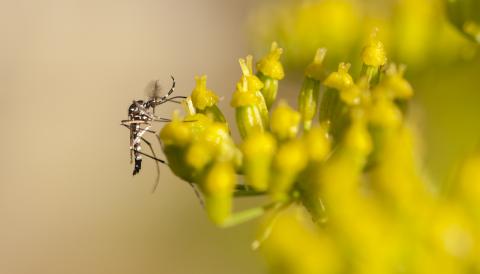Get your brackets ready for March Mammal Madness 2017.
Get your brackets ready for March Mammal Madness 2017.

Who would win in a fight between a Snow Leopard, a Red Giant Flying Squirrel, a Fisher and a Rhesus Macaque? This Monday, the four will duke it out in the opening, wild card bout of the fifth annual March Mammal Madness tournament.
The tournament, which mirrors the popular “March Madness” NCAA Basketball tournament, uses biology to pit dozens of mammals against each other in simulated battles. Katie Hinde, a faculty member for Arizona State University’s Center for Evolution and Medicine, started the tournament years ago after being dissatisfied with a BuzzFeed animal bracket. That version of the tournament only had 16 animals and the winner was determined based on cuteness.
“Originally I gave the bracket to folks in my lab because a tournament with animals seemed cool. As we started filling them out, we realized there was no science to it,” Hinde said. “I had them give them back to me and told them I’d be back in an hour.”
Hinde used her knowledge of mammals to craft her own bracket of 65 contenders and ran a tournament based on natural history. She factored in each species’ physical characteristics and created a probability of victory. Then, using a random number generator, she determined the outcome. To top it off, animals battle in pre-determined environments, giving some a home-court advantage. Injuries occurring in early rounds can also haunt competitors during the course of the tournament.
Once the bracket was finished, Hinde decided to toss it up on her blog on the off chance someone might be interested. Once she tweeted out the bracket, she got an unexpected response.
“It blew up and people got way excited,” Hinde said. “A lot of science-twitter was super into it. People had been using Twitter for science outreach, but this was something novel. And a lot of academics learned how to fill out a bracket.”
With March Mammal Madness’ newfound popularity, Hinde realized she needed some help. Chris Anderson (Dominican University), Josh Drew (Columbia University) and Kristi Lewton (Boston University) all came on board for the second annual tournament in 2014.
Together, they crafted narratives about each bout and posted them on Twitter, all full of information and entertainment relevant to each species. As a result, the tournament offers both opportunities for education and fun. Throughout the years, artists such as Charon Henning have pitched in to help flesh out the experience. Teachers from across the country have students fill out brackets and build lesson plans around the tournament.
Since Hinde arrived at ASU in 2016, she’s involved other Center of Evolution and Medicine faculty. Regents professor Anne Stone and assistant professor Melissa Wilson Sayres now bring a genetic and evolutionary perspective to each round. This year the ASU Library has created a helpful portal where participants can learn how to play and study up on the competitors. The Oxford University Press will publish a curated, open access collection of information on some of the bracket’s biggest contenders. Additionally, the Cleveland Museum of Natural History and the American Society of Mammalogists will be involved.
The tournament now draws thousands of participants, and has spawned an active fandom. They trash talk each other, make betting pools and have even created memes. According to Hinde, people take the tournament very seriously because it takes elements from real life and creates an engaging story.
“People cry when some animals go down,” Hinde said. “We’ve had polar bears die due to melting sea ice. They’re swimming across the ocean, they get exhausted and they can’t go any further. And that happens – it’s happening right now to polar bears. So in that way we’re very much anchored to what’s really happening. And when you’ve created a character that people like, they get really attached.”
March Mammal Madness makes waves outside of Twitter, too. It has been covered, by outlets as diverse as such as Nature, NPR, Scientific American and the Wall Street Journal. This year is making headlines on popular, mainstream, sports-site like Deadspin.
Hinde added that more than 250 teachers from around the world have told her they will be participating with their students. Considering each one likely teaches multiple classes, Hinde projects the tournament will reach 10,000-20,000 K-12 students this year. That doesn’t factor in the college students or other scientists and non-scientists who will actively participate.
Those interested in following the tournament can find the bracket here, on Hinde’s personal blog, as well as on the March Mammal Madness Twitter account. To catch up with the tournament’s previous years, the details are all in the archives of Hinde’s blog (2016, 2015, 2014 and 2013).


